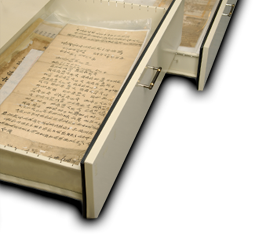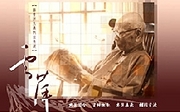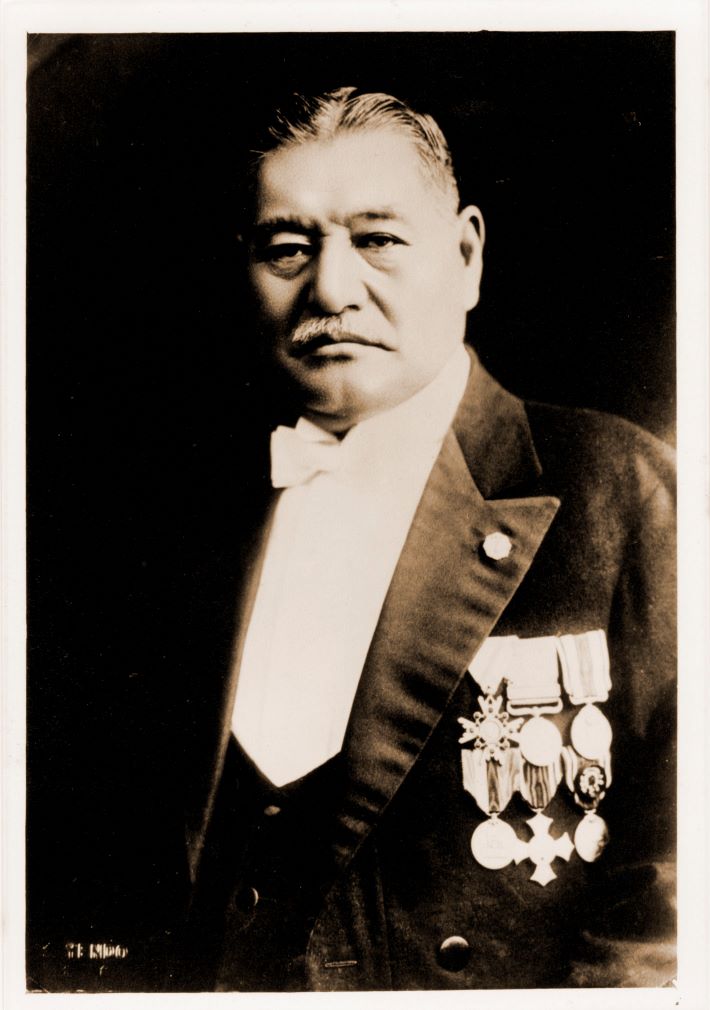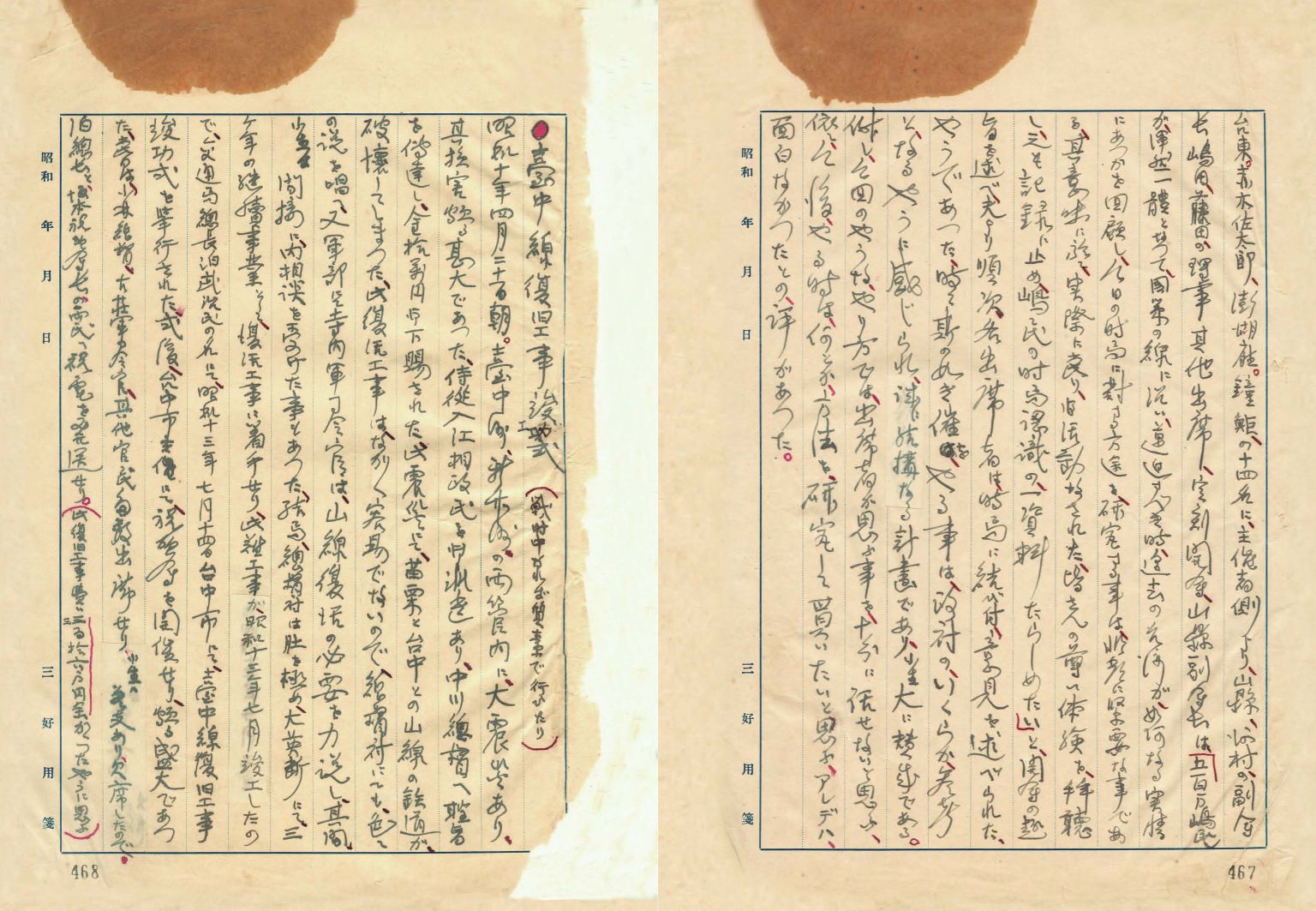|
1. Special Edition "Celebrating the Restoration and Opening Ceremony of the Taichung Line" The restoration project of the Taichung Line was completed in July 1938, and on July 14th, a railway inauguration ceremony was held in Taichung City. Taiwan Shinminpo published a special feature report spanning four full pages over two consecutive days to commemorate the reopening of the railway, highlighting the event's significance with its comprehensive coverage across multiple pages. Within the special edition, the report first detailed the time, cost, and specific materials used in the restoration project, emphasizing the challenges overcome during the repair of tunnels and bridges. It also included expressions of gratitude towards the on-site workers, praising their dedication in overcoming formidable challenges to complete the restoration task. Additionally, the edition featured congratulatory messages from national and local figures, acknowledging the achievement as a victory for the technical team of the Railway Department and a substantial contribution to the development of transportation in Taiwan.
Figure 27 July 14, 1938, Taiwan Shinminpo. In his memoirs, Miyoshi Tokusaburo (三好德三郎, 1875-1939), a Japanese who settled in Taiwan during the early days of Japanese rule, recounted the completion ceremony of the Taichung Line restoration project. MIyoshi Tokusaburo arrived in Taiwan in 1899 and conducted extensive research on oolong tea in places like Taipei's Wenshan and Pinglin districts. He operated the Tsujiri Tea Shop (辻利茶鋪) in Taipei's Sakaemachi (now at the intersection of Chongqing South Road and Hengyang Road, currently a Starbucks store), maintaining close ties with the authorities. He held various positions such as the Taipei Fuzen Street Post Office Director, member of the Taipei Council, member of the Taiwan Government-General Council, and director of the Taiwan Promotion Association Guesthouse, earning him the nickname "Civil Governor." In his recollections, he described the modest ceremony held for the completion of the Taichung Line restoration project: "The Taichung Line restoration project completion ceremony (given the wartime austerity) On the morning of April 21, 1935, a major earthquake struck the Taichung and Hsinchu regions, causing extensive damage... The mountain line railway between Miaoli and Taichung suffered severe damage during the earthquake, and the restoration project was extensive and challenging to execute. Various restoration proposals were discussed within the Government-General of Taiwan, with military commander Shuichi Terauchi advocating for an early restoration of the mountain line railway. During this period, I was indirectly consulted by relevant authorities. Finally, the Government-General made a bold decision and pushed forward with a three-year continuous restoration project for the mountain line railway, which was completed in July of Showa 13 (1938)... Therefore, on July 14, Showa 13 (1938), a ceremony was held in Taichung City to celebrate the completion of the Taichung Line restoration project. After the ceremony, Taichung City hosted a grand congratulatory reception... The reconstruction and restoration project cost a total of 3.16 million yen."
Figure 28 Miyoshi Tokusaburo
Source: Personal and Family Photos, Miyoshi Tokusaburo Papers (T0875), Digital Collection of Archives of Institute of Taiwan History, Academia Sinica.
Figure 29 The record in the memoir about the opening of the Taichung Line.
Source: Memoir of Miyoshi Tokusaburo part 4/87 The completion ceremony of the Taichung Line restoration project, 1938, Taiwan Diary Knowledge Bank.
Three years after the earthquake, the interrupted railway lines not only caused inconvenience but also isolated the affected areas from the rest of the world. Therefore, the reopening of the Taichung Line brings extremely encouraging news to the affected people. In a special report on the reopening of the Taichung Line, nearly 40 interviews and profiles of officials and local residents were published, providing a true record of local history. The issue highlighted the joy and congratulations from various sectors, akin to the joy of long-healed legs finally being able to step forward again, filled with determination to strive harder. Chen Xin (陳炘, 1893-1947), a native of Taichung and a PhD in Economics from Columbia University, was the founder of Taiwan's first Taiwanese-operated financial institution during the Japanese colonial period, "Daito Trust (大東信託)," and the post-war "Dai-Kong Enterprises." He dedicated himself to expanding local financial enterprises. As a director of Daito Trust Co., Ltd., he mentioned in the special report that after the earthquake, the closure of mountain routes caused a sharp decline in goods and visitors to Taichung City, exacerbating its already sluggish economy. Now that the railway is finally reopened, Taichung City should serve as a pivotal hub in central Taiwan, making active contributions to industrial and economic development. Taichung State Assemblyman Wang Ji-liang (王基良) stated in the report that the earthquake turned Taichung into a hellish scene in the blink of an eye, consuming vast amounts of resources and spirit, sending chills down one's spine. The restoration process has been extremely challenging; industries and even government agencies in Taichung suffered severe damage. The recent reopening ceremony was made possible thanks to the dedication of those involved in the project, sparing no effort and expense to complete it in a short time. He expressed deep gratitude and looked forward to the future development and prosperity of Taichung City.
Figure 30 July 14, 1938 Report on Chen Xin.
Source: Taiwan Shinminpo No. 2673 (1938-07-14), Records of The Taiwan Shinminpo (T1119), 1938, Digital Collection of Archives of Institute of Taiwan History, Academia Sinica.
Figure 31 July 14, 1938 Report on Wang Ji-liang.
Source: Taiwan Shinminpo No. 2673 (1938-07-14), Records of The Taiwan Shinminpo (T1119), 1938, Digital Collection of Archives of Institute of Taiwan History, Academia Sinica.
Miyahara Takekuma (宮原武熊, 1874 - ?), a native of Kagoshima Prefecture, Japan, graduated from Aichi Medical College in 1900. He then studied at Ludwig Maximilian University in Munich, Germany, earning his degree there. Upon returning to Japan in 1907, he later came to Taiwan and served as the director of Tainan Hospital. After resigning from this position, he opened a practice in Tokyo and returned to Taiwan again in 1927 to establish the "Miyahara Ophthalmology Hospital (宮原眼科醫院)" in Taichung. Miyahara Takekuma also served as a member of the Taichung State Assembly and as an advisor to the Taichung City Medical Association. In the 1938 report on the railway reopening ceremony in Taiwan Shinminpo, an interview with Miyahara Takekuma was published, recalling his tireless efforts as a physician assisting in disaster relief day and night at that time.
Figure 32 July 15, 1938 Report on Miyahara Takekuma.
Source: Taiwan Shinminpo No. 2674 (1938-07-15), Records of The Taiwan Shinminpo (T1119), 1938, Digital Collection of Archives of Institute of Taiwan History, Academia Sinica.
Figure 33 July 15, 1938 Report on Lu An.
Source: Taiwan Shinminpo No. 2674 (1938-07-15), Records of The Taiwan Shinminpo (T1119), 1938, Digital Collection of Archives of Institute of Taiwan History, Academia Sinica. |
 |










